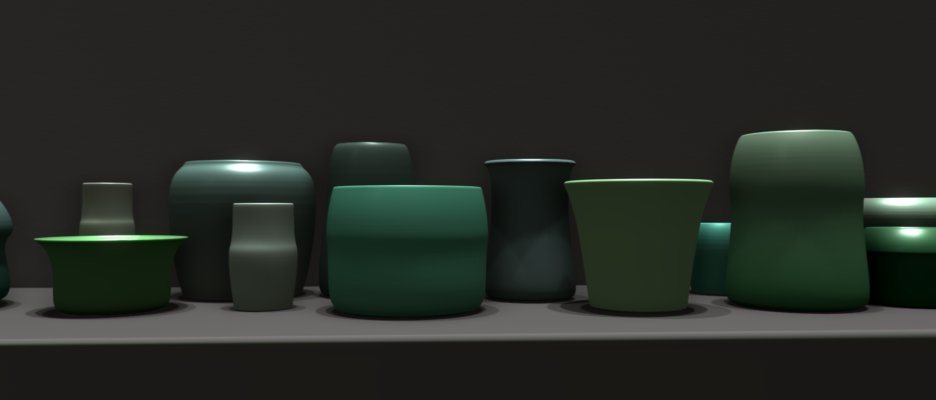The title of Jason Salavon’s recent exhibition, “Annex and Catalogue,” directly and elegantly signaled his interests and concerns. The sale annex, with its promise of discounted plenty, and the catalogue, bringing consumer temptations to our mailboxes, provided the raw material that the artists transformed into impassive grids of colored rectangles and glacially paced video installations.
In the two videos, Still Life II (Glassware) and Catalogue to the Sun and Moon (all works 2007), tumblers and goblets and living-room furnishings go through countless variations in the course of more than an hour: the metal coffee table becomes wood; the lamp changes shape, subtly at first, then radically; the large window solidifies into a wall; the sofa darkens and shifts position. None of the tableaux ever existed in reality. Salavon, who is a research fellow at the Computation Institute at the University of Chicago, realized the two videos through state-of-the-art digital rendering software. The compositions offer virtual placeholders for the generic commodities of Ikea, Crate and Barrel, and Pottery Barn; these rooms and their furnishings, as well as the glassware, represent either the undifferentiated taste of that culture or its Platonic ideal, depending on your view.
Salavon creates his ink-jet color grids with software that averages digital values, in the case blending the colors on defined portions of page spreads of an Ikea catalogue to create contentless fields. Catalogue (20-21) presents a sequence of earth-toned rectangles. The composition is remarkably balanced, given the somewhat random nature (one might think) of the source material, ranging from a brownish green parcel at the upper right, running through umbers and taupe and large medium brown field, to a dark brick box at the lower right. But perhaps the balance in these grids, like the basic sameness of the morphing furnishings, manifests the uniformity that underlies our consumer culture’s promises of distinction.

